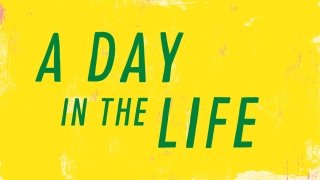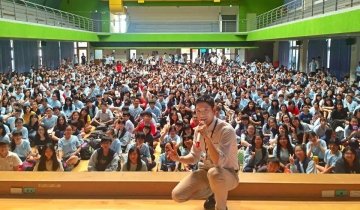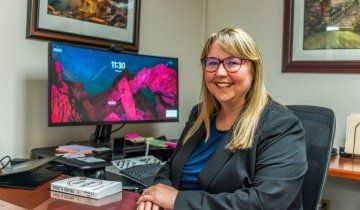Shawn Smith EdD ’05, Chief Innovation Officer at McGraw Hill Education
Shawn Smith EdD ’05 is an author, a former classroom teacher and education administrator, and an expert on digital education. Currently, he is the chief innovation officer at McGraw Hill Education. He lives in East Hampton, New York, with his partner.
TYPICAL DAY IN 2021
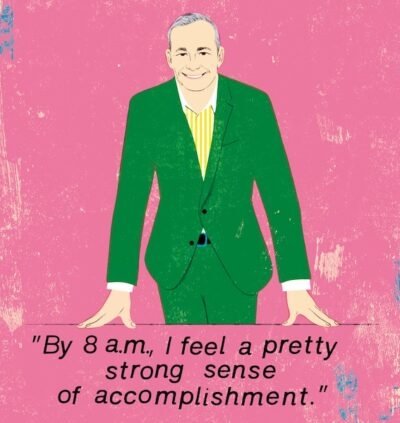
5:45 A.M.: I wake up between 5:45 and 6 a.m. I’ve never used an alarm clock—that seems like an unnatural way to start the day. Admittedly, I am a morning person.
6 A.M.: By 6 a.m., coffee has been brewed, the local news plays quietly in the background and I snuggle onto my couch with my laptop. Typically, this hour is used to check email, review my calendar and prep for the day. My partner, an executive for a large U.S. health care company, sits at the other end of the couch, same routine. We don’t have kids, so it’s a quiet way to start the day.
7 A.M.: I’m a Gayle King fan, so the hour starts with CBS Mornings. I pour a second cup of coffee and weave in and out of creative tasks. It might be writing an article, editing a manuscript, developing branding or marketing concepts for a product, or reviewing visual designs to explain a concept about the classroom of the future.
8 A.M.: By 8 a.m., I feel a pretty strong sense of accomplishment. If it’s my turn, I prep lunch and dinner. Two days a week, I head out for a run to Georgica Beach. It’s the perfect respite after two hours on the couch and computer. I’ll be showered and ready for my first Zoom meeting within the hour.
9 A.M.–NOON: 9 a.m. is the official transition from the couch to my pandemic office. During the past year, we’ve hunkered down at our 145-year-old farmhouse. My makeshift office consists of a card table set up in our living room on Mondays and taken down on Fridays so our weekends appear work-free. We put bookshelves in our living room so I have a Zoom backdrop that looks like I’m in an office. I spend the next several hours jumping between meetings: executive-leadership meetings, direct-report 1:1s, product-roadmap meetings, engineering/technology meetings, data-science meetings. It’s also when I eat breakfast, typically a power bar and a banana.
NOON: Three days a week, I get out of the house to lift weights with a trainer. It’s a nice screen-time break. I typically have a salad for lunch; after weight training, I’ll also have a smoothie.
1:15 P.M.: By 1:15 p.m., my afternoons pick back up with meetings. My work at McGraw is about making the digital workflow of teachers easier. I’m working on a project that connects fragmented data across our programs and combines it with nonacademic data that we know affects learning. Taken together, this learner profile creates a more holistic picture of a student: their academic data, their background, daily social-emotional learning information and executive functioning (cognition) strengths.
6 P.M.: By 6 p.m. it’s time to finish dinner prep. During the summer, I’ll wind down with a quick swim in the pool. Then dinner will be cooked on the grill or in our rustic wood-burning oven—one of my favorite hobbies. Dinner is served around 7 and capped off with a Russian River pinot noir or a pinot grigio.
9 P.M.: It’s early to bed. 5:45 a.m. will come quick, and the process will begin again.
Deborah Elder EdD ’20, Chief Academic Officer at Los Lunas Schools
After beginning her education career as an elementary school teacher, Deborah Elder EdD ’20 transitioned to administrative roles where she provided leadership and teacher development in a range of positions, including as an elementary school principal and executive director in Albuquerque Public Schools’ Office of Innovation and School Choice. In March, she was named chief academic officer at Los Lunas Schools, where she works to improve student outcomes for the 8,500-plus students in the school district located south of the state capital. Additionally, she is an adjunct professor for USC Rossier’s Master of Arts in Teaching program. She lives in Albuquerque with her husband, Scott Elder, superintendent of Albuquerque Public Schools.
AUG. 4, 2021
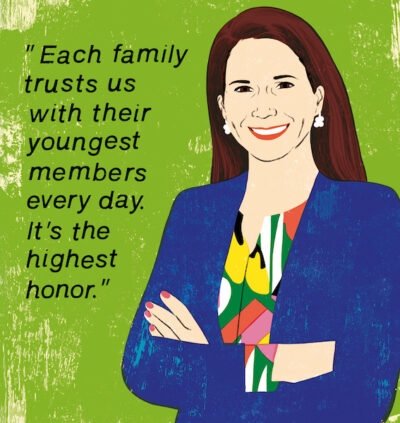
5:40 A.M.: Alarm clock goes off. Much to the annoyance of my husband, I hit snooze twice. I scan the news apps on the phone.
6:30 A.M.: Power breakfast: two eggs, chopped spinach, New Mexico green chile and a bit of cheese. Washed down with two cups of coffee. While I eat, I skim the local newspaper.
7 A.M.: Hit the road. My 40-minute commute takes me through Albuquerque, across the Rio Grande, through Isleta Pueblo land and to the village of Los Lunas. I get the full range of New Mexican scenery, from mountains to mesa. My new job is 100 percent in person. I do not miss my home office from the COVID-19 lockdown one bit.
8 A.M.–2 P.M.: First school visits of the new year with the superintendent and my colleagues on cabinet. This is my 28th year experiencing the first day of school, and there’s nothing like it. There’s a shared sense of promise and hope. We visit six schools, and I’m overcome with gratitude. Talking with students gives the best insight. I speak with Catherine, a fourth grader new to the district and not enjoying her first day; Abel, a freshman struggling to find his classroom and relieved to find an assistant principal to help him; Evan, a third grader looking forward to having his socially distanced lunch on the field instead of in the cafeteria. Each family trusts us with their youngest members. It’s the highest honor, and I feel the responsibility to be worthy of that trust every single day, in every classroom, on every campus.
2–5 P.M.: Back to the office to catch up with my team of directors. Then I start on the other work: preparing professional development for principals, coaches and teachers; matching principals with performance coaches; reading literature on critical race theory; collaborating with colleagues to ensure services for our new Digital Academy; and working on strategy to engage the community for input on the use of Elementary and Secondary School Emergency Relief funds.
5 P.M.: Commute. I enjoy having the time to reflect on the day. My best planning happens in the car.
5:45 P.M.: Workout! I prefer to work out in the morning, but I don’t love getting up super early. A stop at the gym on the way home works for me.
7 P.M.: Home. Usually, my husband is already there. Our sons moved to a rental house close to the University of New Mexico a year ago so they could be near campus while they attended class from their rooms. I miss them terribly. My husband and I have learned to enjoy a byproduct of empty-nesting: no meal-planning. We figure out what we want and either make a simple dinner or support our local restaurants. I spend another hour or so on my laptop. My favorite place to work at home is my back porch so I can enjoy the flowers my grandmother planted when she moved to this house in the 1970s. I’ve never been much of a TV watcher, but since the boys are out of the house, my husband and I watch a few episodes of Schitt’s Creek. We might be the last people in the country (or at least our social circle) to see it.
10 P.M.: I try to follow the steps that magazines recommend—I take a warm shower and give myself time to unwind. I read before I fall asleep but never make it more than a few pages.
Summer Salomonsen EdD ’19, VP of Content Product at Cornerstone OnDemand
Summer Salomonsen EdD ’19 started her career in education as a classroom teacher. After years in corporate learning and development, consulting, and strategic development and education technology, she now works as the vice president of content product at Cornerstone OnDemand, a software provider and learning technology company that helps organizations recruit, train and manage their staff. In her role, she leads the strategy, development and execution of all content offerings, built to improve the working lives of Cornerstone’s 75 million global users. She lives in Colorado with her husband and two daughters.
JULY 30, 2021
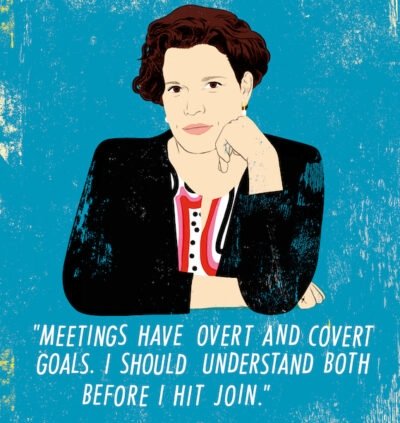
7 A.M.: Yes, I sleep a lot. Usually nine hours a night. Sleep restores your body and your balance. Today, I awoke to the sounds of my two girls (4 and 8) pretending to be monkeys. Their laughter pulls me out of bed as I do a quick pass of core work apps on my phone: Slack, Workplace, Outlook, LinkedIn. So far, so expected.
7:30 A.M.: Espresso first. Obviously. My eldest makes it for me—my “go-juice” she says. Two shots do the trick, plus a quick bowl of granola. I’ve worked remotely for 10 years across three jobs, so our home routines are pretty baked. Breakfast together—me, my husband and our girls. We read magazines and talk about things. Golden time that will make beautiful memories one day.
8:30 A.M.: At my desk, surveying the scene. I manage multiple teams across the U.S.—and this requires clear operating expectations. First things first: How are my people? I send a quick Slack message to each of my directs—bridging the distance with a personal “Hiya!” Second, triage the day. Just 10 (known) meetings—a lighter day—though each for distinct purposes. Basic principle: Every meeting has both overt and covert goals. I should understand both by the time I hit join. Third shot of espresso it is.
8:35 A.M.–12:45 P.M.: Back to back to back. You get it. Webcams are on for my team—so important to see people and be human in this way. This time includes two project check-ins (one on track, the other not so much), two 1:1s with direct reports, one unscheduled meeting with leadership, one snappy-fast working session to outline the flow for an upcoming focus group, one tech check for an upcoming webinar, and one meeting with Talent. I take notes constantly, yet discretely, using OneNote. I color-code tabs for key projects and people and capture dialogue, expectations, next steps. This practice empowers me to track the meeting flow and be intelligent about those meetings afterward.
12:45–1:15 P.M.: My husband is a gifted stay-at-home dad, caring for our girls with patience and empathy. While our youngest naps, he rides in the garage (Zwift, anyone?), and my eldest learns to code on her iPad. “Let’s go,” I say—and we take our ancient Chihuahua out for a walk. “How’s your meetings, Mama?” she queries. I scarf a quick lunch of chicken salad, chips and snap peas before my 1:15 call.
1:15–5:30 P.M.: A bit of a blur, really. But my notes keep me homed in. More unplanned meetings and deep work to finish a deck, an email and a proposal. Building compelling learning content for Cornerstone’s global customer base is multifaceted work, but these days my focus is on building our partner network, extensive R&D for new learning series, and liaising with product and engineering on platform enhancements. Digital sticky notes populate my desktop, color-coded with OneNote, keeping me focused.
5:35 P.M.: Sign-off time today. My girls come quietly to my office door and mouth, “You done?” “Yes, babies. All done.” We head outside to play and ride bikes. Later, we watch the Olympics, eat pizza and talk about our day. I discreetly check my phone for new messages or emails from the West Coast until 7:30 p.m., when we tuck in the girls.
8–10 P.M.: Post-kids-in-bed time is precious. On this day, time spent reading (The Bird Way by Jennifer Ackerman) and a glass of single malt unwinds me beautifully. Lights out at 10 p.m.
Diontrey Thompson EdD ’18, Senior Director of Strategy, Culture and Belonging at Genentech
After eight years working at Stanford University, where he rose to the position of associate dean and executive director, Diontrey Thompson EdD ’18 now works for Genentech, an international biotechnology company. He helps ensure inclusive experiences for Genentech staff, leads the company’s diversity and inclusion (D&I) development program and advises senior business leaders on strategies to embed D&I principles throughout the organization. He lives in Oakland, California, with his partner.
JULY 13, 2021
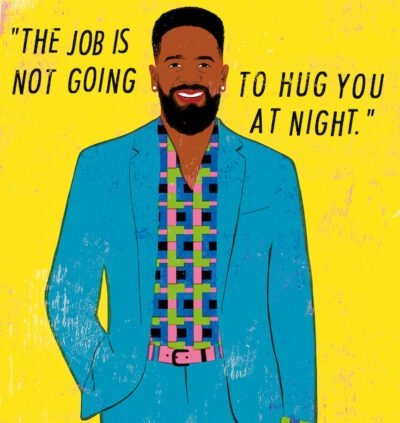
6 A.M.: I wake up to that traditional buzzing alarm sound. I’m a hard sleeper, so I need something to jolt me out of bed. Today, I’m going into the office for a Chief Diversity Office leadership-team meeting. I dress and am on the road by 7 a.m.
7 A.M.: My commute is about 45 minutes. If you’ve ever been to San Francisco, you know traffic on the bridge is always terrible. Usually, I listen to R&B to set the tone for the day, but today I hop on a call for department leads. Genentech is a global company, and we have “golden hours” from 6 to 8 a.m. PT.
8 A.M.: It’s my first time returning to campus since we went remote. I grab my brown-bag breakfast (yogurt, fruit, French toast and sparkling water) and set up at a small one-person office. I comb through emails and prep for my meeting, readying my slides and talking points.
9:30 A.M.–NOON: The meeting starts with an icebreaker. We’re a new team, and it’s the first time a lot of us are meeting one another in person. The agenda is focused on our health-equity work. We discuss: our efforts to make clinical trials accessible to communities of color, the project we’re implementing that will allow leaders from other departments to sit on our diversity and inclusion (D&I) leadership team for a rotation, and an education and action plan for officers across the company so they can learn how to better align with our D&I strategy.
NOON–1 P.M.: The six of us go to lunch, furthering our connections and enjoying each other’s company. Genentech provides our meals. I was nervous because I’m a pescatarian but, luckily,
they have a vegetarian jambalaya. Our cafeteria is right along the water, and there’s a nice breeze coming through.
1–1:45 P.M.: After lunch, I spend some time thinking about our D&I training. All too often D&I training is a one-and-done kind of thing—“I went to unconscious-bias training, and I am now unbiased.” I want to reframe that conversation. This should be a journey where we are constantly learning and growing.
1:45–4 P.M.: Next up, I have 1:1 Zoom meetings with two of my direct reports. They catch me up on their projects, and we discuss next steps.
4–5 P.M.: I end the day hosting a dialogue circle for our Asian American and Pacific Islander community to discuss microaggressions and recent Asian hate crimes. About 15 staff members join in on Zoom. I check in to see how they’re feeling, how they’re engaging and if they need more support.
5–8 P.M.: Traffic is terrible, so I stick around and meet up with a friend who works in South City. We go for dinner at Red Lobster.
8–8:30 P.M.: Getting across the Bay Bridge is a breeze. I’ve been on a H.E.R. kick, so I put on the new album.
8:30–10:30 P.M.: I get home, light my strawberry poundcake candle and shower. My partner and I like to chill and watch television in the evenings. We’ve been watching Love, Victor. It’s a coming-out story of a young man as he goes through high school. Cute and super emotional.
10:30 P.M.: By 10:30, I’m in bed. I make a point not to look at email after work—the job is not going to hug you at night—but I check my calendar to figure out the next day. My motto: Whatever I didn’t finish today, I get another chance to do the next day.

